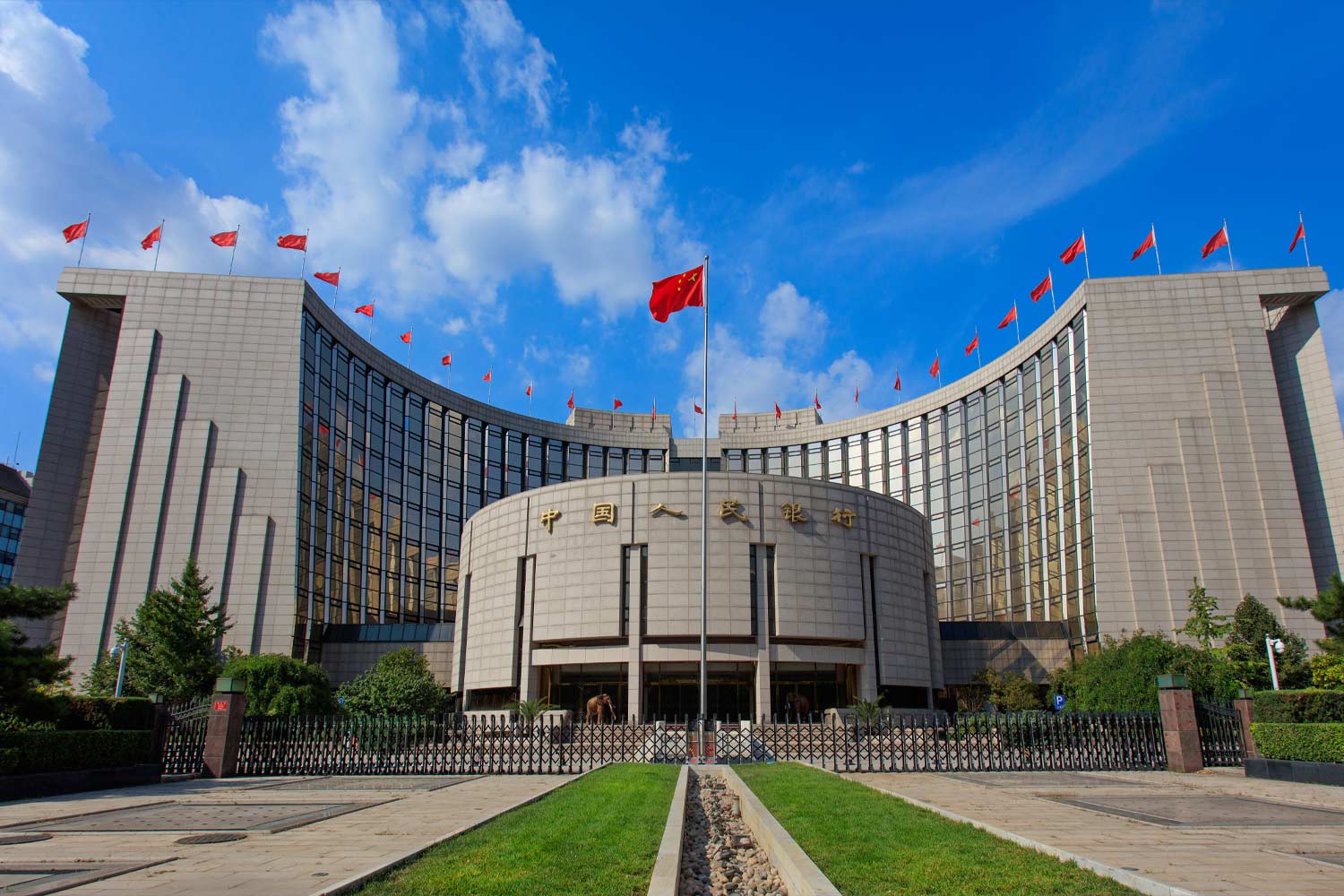Easy does it for central banks and China
With major central banks and China now easing policy, we may see global growth accelerate over the next 12 months. Stronger growth and lower expected inflation is constructive for global stocks. This is likely to encourage a broadening in investor interest for previously unloved areas of the market, such as Chinese equities, which have benefitted from a recent stimulus program.
The value of investments can fall as well as rise and that you may not get back the amount you originally invested.
Nothing in these briefings is intended to constitute advice or a recommendation and you should not take any investment decision based on their content.
Any opinions expressed may change or have already changed.
Written by Daniel Casali
Published on 29 Oct 20246 minute read

As with the unlikely pair of Jack Lemmon and Walter Matthau in the 1968 film “The Odd Couple”, the US Federal Reserve (Fed) and Chinese government are a seemingly, incompatible pair that have been put together, in this case, to stimulate the global economy.
It’s not that the global economy is in bad shape. Unemployment rates in developed economies are close to record lows and output growth remains robust.
Instead, the Fed lowered rates in response to decelerating inflation and to safeguard against risks from relatively high real borrowing costs over the last few years. Similarly, the European Central Bank (ECB) reduced interest rates for the third time this year as inflation has significantly undershot its own expectations, and the Bank of England (BoE) is likely to cut for the second time when the Monetary Policy Committee (MPC) meets on 7 November this year.
In contrast, China is trying to reflate its economy to avoid deflation (a decline in prices). China’s stimulus, alongside major central bank easing, improves the chance of it being effective in supporting domestic demand, as it reduces the risk of capital outflows to economies offering relatively higher interest rates.
Monetary easing comes amidst solid labour markets and healthy household finances, which are driving consumption growth in developed economies. In the US, financial resources available to consumers from housing wealth, take-home pay (income after tax is deducted) and consumer credit, have boosted real household purchasing power to a healthy annual rate of 4.9% in the second quarter of 2024.1 This is higher than the current rate of real personal consumption at 2.7%.2 If this spending power is sustained, and consumers feel confident to spend, then there is room for US GDP growth to accelerate.
Stronger growth is a boon for stocks
This synchronised policy easing could enable global growth to accelerate over the next 12 months. Under that scenario, there is a greater probability that companies deliver on analyst earnings’ expectations. Though it is worth noting that the bar has been raised. The consensus expects earnings per share for globally listed companies in the MSCI benchmark to grow 13% in 2025, up from the 9% projected for 2024.3
Encouragingly for equity investors, inflation is still expected to slow further as the global economy continues to normalise from the Covid pandemic. The latest Bloomberg survey of economists predicts that global Consumer Prices Index (CPI) inflation will decelerate to 3.4% in 2025 from 4.5% this year.4
Labour productivity gains have also enabled the US economy to expand at a faster rate without generating higher inflation. That should ensure that central bankers continue to cut interest rates and help to stimulate the economy.
Drilling further into how asset classes perform, Krishna Nehra, Evelyn Partners’ Head of Quantitative Strategy, has analysed the historical returns of equities and bonds when growth has been above trend since 2000. Her analysis found that equities outperform government bonds on average by more than 3.5% annually.5
It won’t necessarily be plain sailing for investors. There are some risks to monitor. First, a disputed US presidential election could lead to social unrest and market uncertainty. Second, an escalation in the conflict between Israel and Iran could restrict the supply of oil to the global economy and drive-up inflation. Thirdly, a potential loss of investor confidence in the artificial intelligence theme could undermine the rally seen in US large-cap tech stocks. If any of these risks occur, it could weigh on stocks.
The case for Chinese equities
Stronger global growth could well encourage a broadening in investor risk appetite for previously unloved areas of the market, such as Chinese equities. Furthermore, China’s multi-faceted stimulus announcement at the end of September provides a catalyst for further gains in equities market.
The MSCI China index is up more than 20%, led more by a valuation adjustment rather than a fundamental upturn in company earnings. Nevertheless, it still lags the wider global equity markets (see the chart below).6
Beijing announced some typical monetary easing, such as lowering interest rates and injecting more money into the financial system through a cut in the commercial banks’ reserve requirement ratio. Measures to boost the residential property market were also disclosed, including reducing the minimum down payment ratio for second home purchases to 15% from 25% and providing finance for state-owned firms to buy unsold inventories of property.7 The Politburo (China’s highest political body, which oversees the central government) also pledged to launch proactive fiscal stimulus.
This stimulus package was markedly different from previous ones announced over the past two decades. It includes an unprecedented mechanism for the central bank to supply funding to directly support the equity market. Essentially, Chinese state-owned financial institutions and non-financial state firms can tap into the central bank’s balance sheet to buy stocks when called upon to do so. In a way, this suggests that the Chinese authorities have taken a “whatever it takes” commitment to support its capital markets and economy.
Why did China unveil a new stimulus program?
Arguably, there were solid economic reasons for the stimulus announcement. The Chinese economy seems to be on the brink of deflation and the property sector continues to spiral downwards. The floor space of new housing is down a staggering 60% from its peak in 2020.8
Politically, it was an opportune time for China to launch a round of stimulus. The leadership probably wants a positive backdrop to mark the year after the 75th anniversary of the founding of the People’s Republic of China on 1 October. We believe President Xi Jinping also wanted to show that the Chinese economy was on a firm footing before the annual BRICS (Brazil, Russia, India, China, South Africa) summit, which took place in Kazan, Russia in October.
Meanwhile, the possibility of higher US tariffs on Chinese exports - should Donald Trump win the US presidency - presents another risk. Exports have been a key contributor of China’s economic growth of late.
Supporting the domestic economy provides some insurance against economic headwinds, and there is likely to be more fiscal easing to come. At the time of writing, it is still unclear what fiscal measures will follow over the coming months and how significant they will be.
Investors are now trying to determine whether this stimulus represents a financial “bazooka” – a term which describes the major stimulus programmes passed in China over recent decades.
We looked at the last eight significant MSCI China bull markets (including the current one) since 2006. Our analysis finds that stimulus-driven rallies have gained around 50% on average from trough to peak and lasted about seven months.9 Considering the rally is up around 20% and is a month old, we might see further gains to match the historical average.10
However, the question remains whether the measures passed will address the structural problems, or if they are merely a plaster. Fundamentally, the structural challenges need to be solved if investors are going to buy into the Chinese equity story over the longer term. We list three pressing concerns:
1) Despite strong economic growth, Chinese companies do not have a good track record at generating earnings-per-share (EPS) growth compared to peers. Over the past 15 years, the EPS recorded by Chinese companies has underperformed their counterparts in India by more than 50%11
2) Unfavourable demographics, where the working age population is shrinking, and its corresponding impact on the residential sector, are structural drags on growth
3) Without a solid social safety net, households save too much of their income. Unsurprisingly, consumer confidence is at rock-bottom and not enough money is being spent to boost the economy
In short, the rally in Chinese equities can be sustained, assuming the Chinese authorities proceed with their planned fiscal stimulus. However, longer term, they will need to address the economy’s structural risks to entice international investors back to the Chinese equity market.
Regardless, of whether the Chinese equity rally lasts, the odd combination of the Fed and Chinese government easing increases the probability of above trend growth over the next 12 months. We continue to favour equities over bonds in this environment.
Sources:
1,2,3,5,6,8,9,10,11 LSEG, Evelyn Partners, October 2023
4 Bloomberg, October 2024
7 Barclays, PBoC: Bigger guns but still no bazooka, 24 September 2024
Get insights and events via email
Receive the latest updates straight to your inbox.
You may also like…

Investment Outlook
Investment Outlook: Europe has woken up to the “America First” agenda

Investment Outlook
Investment Outlook: Equities swipe left on Trump’s tariff threats

Investment Outlook



